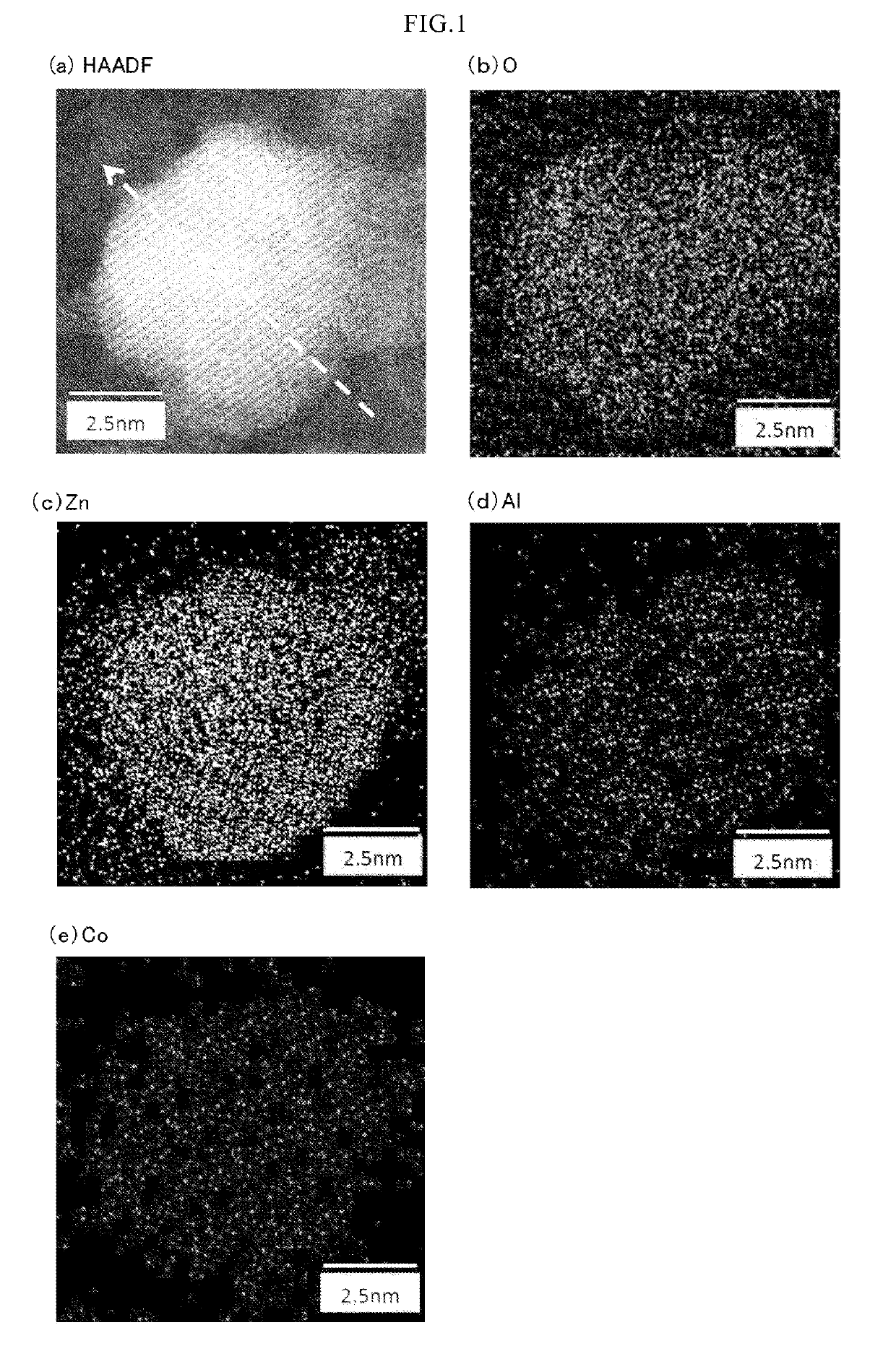Coloring ultraviolet protective agent
a ultraviolet protective agent and color technology, applied in radiation-absorbing paints, other chemical processes, titanium compounds, etc., can solve the problems of increasing the amount of use, difficult to completely absorb or shield ultraviolet rays of 380 nm or less, and not having the dispersion of oxide particles, etc., to achieve effective coloring, high transparency, and not impair the texture or appearance of raw materials
- Summary
- Abstract
- Description
- Claims
- Application Information
AI Technical Summary
Benefits of technology
Problems solved by technology
Method used
Image
Examples
embodiment-1
of M2 Doped Oxide Particles
[0057]The metal element or metalloid element (M1) and (M2), includes one or more elements selected from metal elements and metalloid elements in the chemical periodic table. Namely, in the present invention, the oxide is not limited to the oxide consisting only of the M1 and M2, and the present invention can be also carried out using an oxide containing other element(s) M3, M4, . . . Mn different from M1 and M2. The numbers attached to M are merely numbers for identification. A metalloid element in the present invention is not particularly limited, but preferably includes metalloid elements such as Ge, As, Sb, Te, Se, Si and the like. In the present invention, the M1, M2, or Mn may be contained in a coating layer that coats at least a part of the surface of the M2 doped oxide particles described later.
embodiment-2
of M2 Doped Oxide Particles
[0058]The M2 doped oxide particles of the present invention may be composed only of oxides, but is not limited to particles composed only of oxides. As the M2 doped oxide particles of the present invention, oxide particles containing a compound other than oxides may be also used to the extent that the compound does not affect the present invention. For example, M2 doped oxide particles in which oxide particles (M1Ox) containing a compound other than oxides are doped with a metal element or metalloid element, may be used. Examples of the above compound other than oxides include a hydroxide, nitride, carbide, various salts such as a nitrate and sulfate, and a hydrate and organic solvate.
embodiment-3
of M2 Doped Oxide Particles
[0059]While the M2 doped oxide particles of the present invention are oxide particles in which M1Ox is doped with M2, it is preferable to form a solid solution in which M1 and M2 are uniformly distributed in one oxide particle, in terms of enhancement of an average molar absorptivity coefficient in the wavelength range of 200 nm to 380 nm and strict control of color characteristics in the visible region. The solid solution may be solid solution oxide particles in which the M1 and M2 exist in the inside of the particles, in the vicinity of the surface layer of the particles, or in a local part of the particles. A method of evaluating that the particle is uniform or a solid solution, is preferably a method that a plurality of particles are observed using a transmission electron microscope (TEM) or a scanning transmission electron microscope (STEM), and that an abundance ratio and an existing position of M1 and M2 in each particle is confirmed using an energy...
PUM
| Property | Measurement | Unit |
|---|---|---|
| wavelength | aaaaa | aaaaa |
| molar ratio | aaaaa | aaaaa |
| particle diameter | aaaaa | aaaaa |
Abstract
Description
Claims
Application Information
 Login to View More
Login to View More - R&D
- Intellectual Property
- Life Sciences
- Materials
- Tech Scout
- Unparalleled Data Quality
- Higher Quality Content
- 60% Fewer Hallucinations
Browse by: Latest US Patents, China's latest patents, Technical Efficacy Thesaurus, Application Domain, Technology Topic, Popular Technical Reports.
© 2025 PatSnap. All rights reserved.Legal|Privacy policy|Modern Slavery Act Transparency Statement|Sitemap|About US| Contact US: help@patsnap.com



